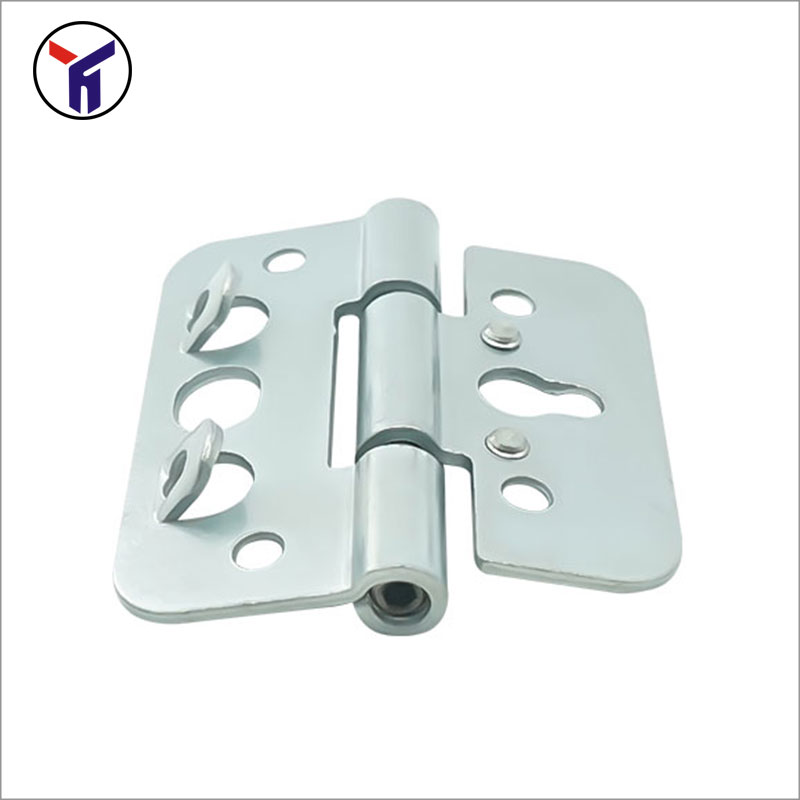The common types of door hinge
2021-11-09
1. Furniture hinge
According to different installation combinations, it can be divided into in-line type and self unloading type; It is divided into 90 degrees, 100 degrees, 110 degrees, 180 degrees, 270 degrees, etc. according to the opening angle of the door panel; According to the different needs of cabinet assembly, it is divided into full cover (straight plate), half cover (small bend) and no cover (large bend or embedded).
2. Bathroom cabinet hinge
The bathroom cabinet can be opened and closed thousands of times, and the door hinge is very important. Practice has proved that in terms of the nature of the use of the bathroom cabinet, the accuracy of the arrangement of the bathroom cabinet, and the weight of the bathroom cabinet door itself, the selection of hinges is more important. Hinge is commonly known as hinge. In the process of frequent opening and closing of bathroom cabinet door, hinge is the most tested. Most of the hinges seen on the market are removable, which are divided into two parts: base and buckle. The hinge generally has two-point clamping position and three-point clamping position. Of course, the hinge with three-point clamping position is better. The steel for making hinges is the most important. If it is not selected well, after a period of time, the door panel may be turned back and back, slipping away from the shoulder. The hardware of big brand bathroom cabinet almost uses cold rolled steel, and its thickness and toughness are perfect.
3. Buffer hydraulic hinge
The buffering hydraulic hinge aims to provide a hydraulic buffering hinge with ideal buffering effect by using the buffering performance of liquid. The utility model comprises a support, a door box, a buffer, a connecting block, a connecting rod and a torsion spring, and one end of the buffer is hinged on the support; The middle of the connecting block is hinged on the support, one side is hinged with the door box, and the other side is hinged with the piston rod of the buffer; The connecting block, connecting rod, support and door box form a four-bar mechanism; The buffer comprises a piston rod, a shell and a piston. The piston is provided with a through hole and a hole. When the piston rod drives the piston to move, the liquid can flow from one side to the other through the through hole, so as to play a buffer role

According to different installation combinations, it can be divided into in-line type and self unloading type; It is divided into 90 degrees, 100 degrees, 110 degrees, 180 degrees, 270 degrees, etc. according to the opening angle of the door panel; According to the different needs of cabinet assembly, it is divided into full cover (straight plate), half cover (small bend) and no cover (large bend or embedded).
2. Bathroom cabinet hinge
The bathroom cabinet can be opened and closed thousands of times, and the door hinge is very important. Practice has proved that in terms of the nature of the use of the bathroom cabinet, the accuracy of the arrangement of the bathroom cabinet, and the weight of the bathroom cabinet door itself, the selection of hinges is more important. Hinge is commonly known as hinge. In the process of frequent opening and closing of bathroom cabinet door, hinge is the most tested. Most of the hinges seen on the market are removable, which are divided into two parts: base and buckle. The hinge generally has two-point clamping position and three-point clamping position. Of course, the hinge with three-point clamping position is better. The steel for making hinges is the most important. If it is not selected well, after a period of time, the door panel may be turned back and back, slipping away from the shoulder. The hardware of big brand bathroom cabinet almost uses cold rolled steel, and its thickness and toughness are perfect.
3. Buffer hydraulic hinge
The buffering hydraulic hinge aims to provide a hydraulic buffering hinge with ideal buffering effect by using the buffering performance of liquid. The utility model comprises a support, a door box, a buffer, a connecting block, a connecting rod and a torsion spring, and one end of the buffer is hinged on the support; The middle of the connecting block is hinged on the support, one side is hinged with the door box, and the other side is hinged with the piston rod of the buffer; The connecting block, connecting rod, support and door box form a four-bar mechanism; The buffer comprises a piston rod, a shell and a piston. The piston is provided with a through hole and a hole. When the piston rod drives the piston to move, the liquid can flow from one side to the other through the through hole, so as to play a buffer role

Previous:How to choose a good door hinge
X
We use cookies to offer you a better browsing experience, analyze site traffic and personalize content. By using this site, you agree to our use of cookies.
Privacy Policy

